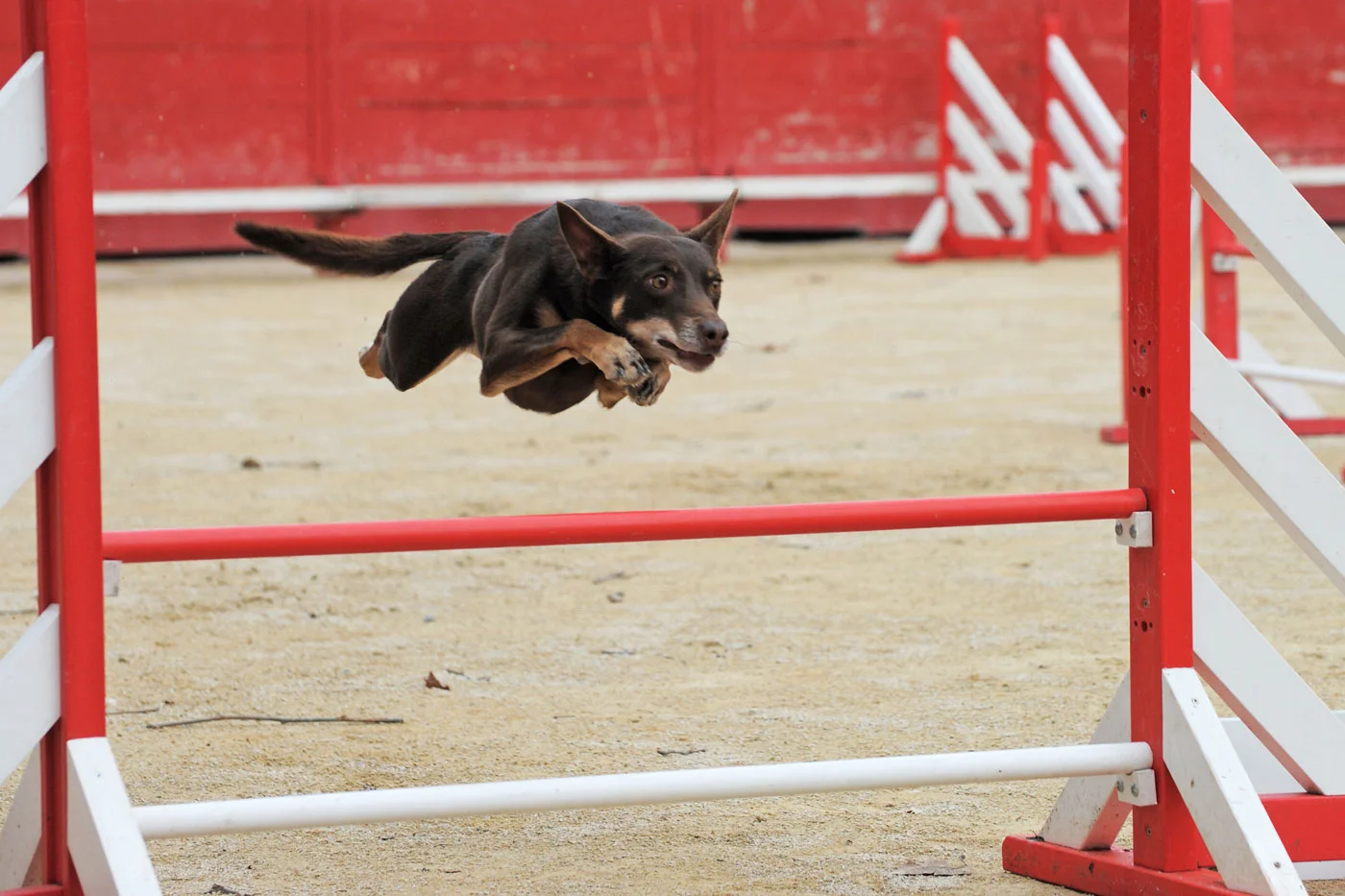We asked Rosa-Maria Ikäheimonen, the coach and founder of Speed Up Agility, to explain how an agility handler can get in top condition for the most important competitions of the year, how a year should be divided into different training periods and what these different training periods actually mean.
What does the fitness training of an agility handler include?
Rosa explains that an agility handler, just as any other athlete, needs a good base fitness, on which sport-specific endurance, strength and speed is built. “An agility handler needs to be agile as well as in good condition. In addition, speed and explosive force production is needed. This is why an agility handler benefits from versatile and sport-specific training.”
With sport-specific training, Rosa means exercises that mimic movement on an agility course. “All kinds of running, accelerating, agility and coordination exercises support handlers’ performance. Strength and speed are needed for spurts and explosive starts.”
The 4 training seasons of an agility handler
In agility, it’s typical that there are competitions all year round. This is why it’s important that each handler plans his or her year and decides which competitions are most important. Top condition is then built accordingly.
Top condition for an agility handler means maximal strength and speed. To achieve it, one needs to dedicate a season for base training and a season for competition preparation. Then there is competition season and a period of transition. The biggest difference between the seasons is the amount and efficiency of training.
1. Base training season
The idea of the base training season is to prepare the body for the upcoming more efficient training. This means the amount of training sessions is higher and training efficiency lower.
During base training season, it is important to invest in the development of sport-specific endurance and burdening one’s joints and muscles. This improves recovery during later seasons and prevents RSI (repetitive strain injury) and other sports injuries.
The exercises include e.g. strength training, line running drills, spurts, stair workouts or hill training workouts and elasticity training. You can also do any endurance training, the more sport-specific the better, because “What we have to learn to do, we learn by doing”.
In addition, this phase ought to include some movement control skills, such as coordination, agility and technique exercises, but the amount and efficiency of them should be kept moderate. Training intensity can grow along with the level of fitness as the season progresses.
2. Competition prep season
During competition prep season, strength and speed are trained more according to sport-specific requirements. Also, training efficiency is increased whereas the amount of training is reduced as compared to base training season.
The training program can constitute of high intensity running spurts, jumps and leaps as well as strength training.
3. Competition season
During competition season, the hardest exercises are the competitions. The exercises in between competitions are restorative but also stimulate the body. If competition season is long and there are several weeks in between the competitions, it is good to do some sensitizing exercises.
During competition season, lighter and restorative training in between competitions can be differing circuit training, line running drills and spurts to stimulate the body. The exercises should be short and they should not strain the handler.
4. Period of transition
The last season is the period of transition, during which it is important to advance mental and physical recovery. “A year is a long time to concentrate on the upcoming competition season, so it’s good to give yourself some slack.” During the period of transition, agility handlers can do sport and try new things, but it’s not progressive or goal oriented.
How to split the year into training periods?
Rosa gives some examples on how to split the year into different training seasons.
Training season can be divided into one long season. As regards agility, however, it’s more natural to do several shorter cycles a year.
If the most important competitions are in June and August:
Longer cycle
Base training seasons 1 and 2 approx. October – middle of March
Competition prep season middle of March – May
Competition season starts approx. 1 to 2 weeks before the first important competition e.g. in the beginning of June and ends e.g. after the important competition in August.
Period of transition September - October
Shorter cycle
Base training seasons 1 and 2 approx. February – April
Competition prep season: May
Competition season starts approx. 1 to 2 weeks before the first important competition
However, Rosa emphasises that most agility handlers benefit from any kind of physical training: “What’s important, is that you find your own weaknesses and start developing them. Every progressive training period, even a short one, takes you forward.”
“What’s important, is that you find your own weaknesses and start developing them. Every progressive training period, even a short one, takes you forward.”
How to build your own training year?
Set a goal: What components do you want to develop, for example speed, explosivity, agility or endurance?
Plan season’s competitions: Make a list of all competitions: small and big
Set the most important competition/s of the year as main goal/s
Make seasonal plan: A seasonal plan is a rough plan, in which you place the base training, competition prep and competition seasons. You can draw up one longer cycle or several small cycles around your preselected competitions. Please note, that this is a plan. You can change it if needed.
Make a training plan: Plan training sessions at a weekly level according to training season. The length of the training plan can be 4 to 12 weeks, for example.
Execute: Well planned is half done. Now you have a goal, a seasonal plan and a weekly plan. The journey may begin!
Other article’s about the Agility handler’s physiques
Thoughtful movement = Better communication
Does an agility handler need to be in top condition?

